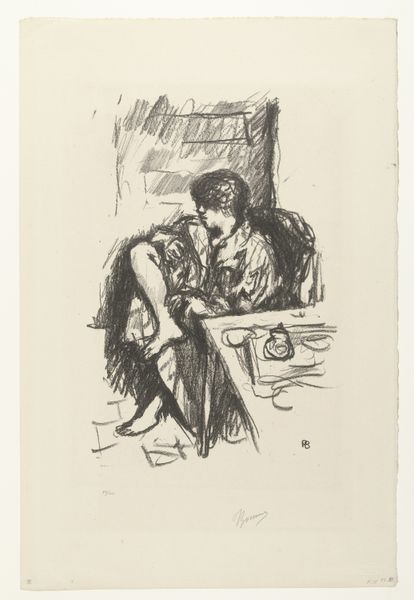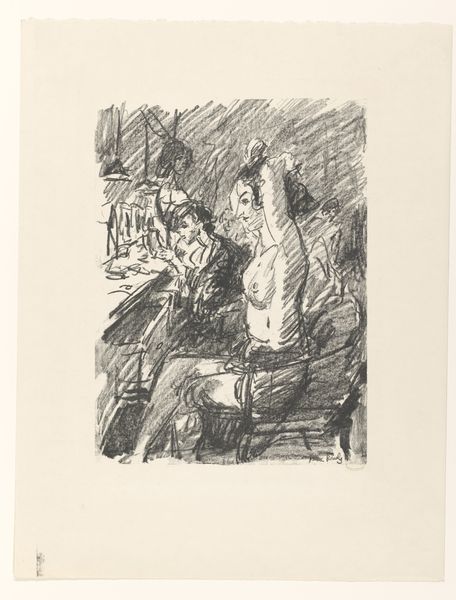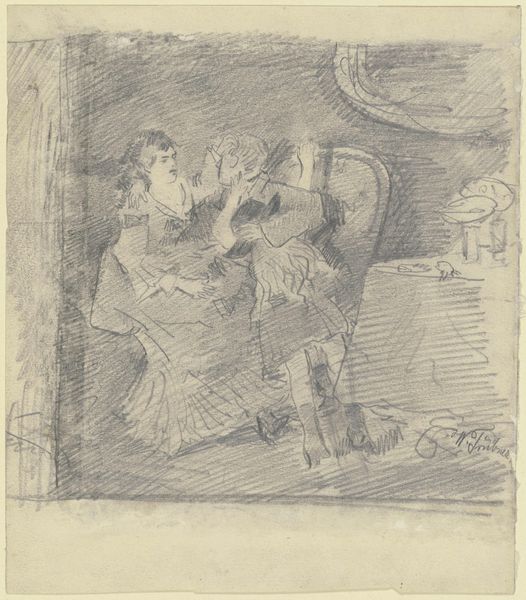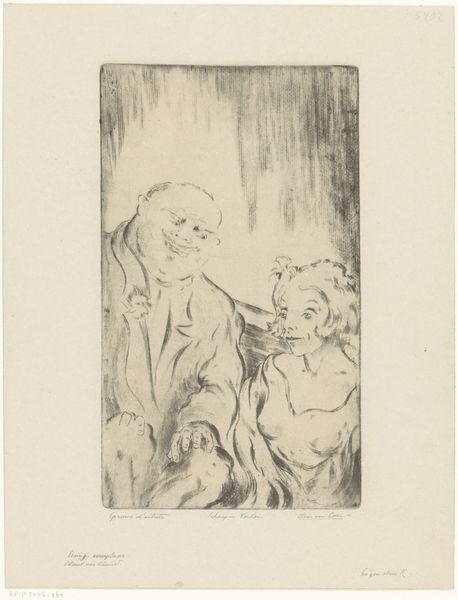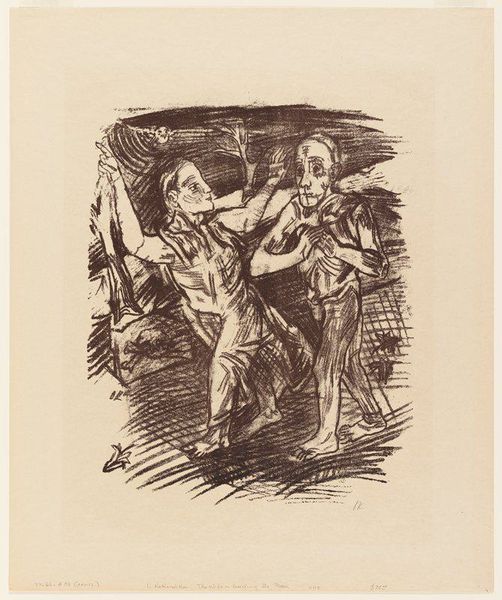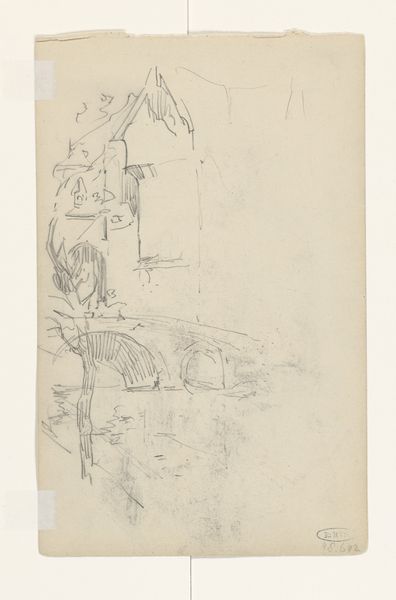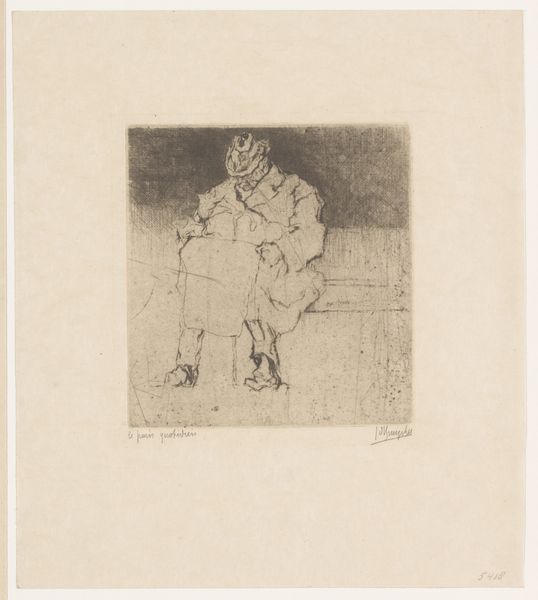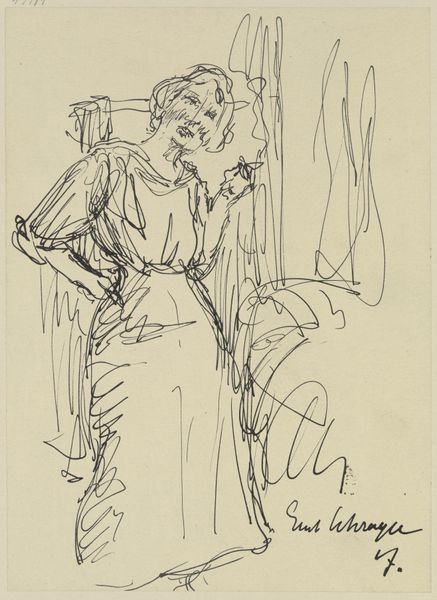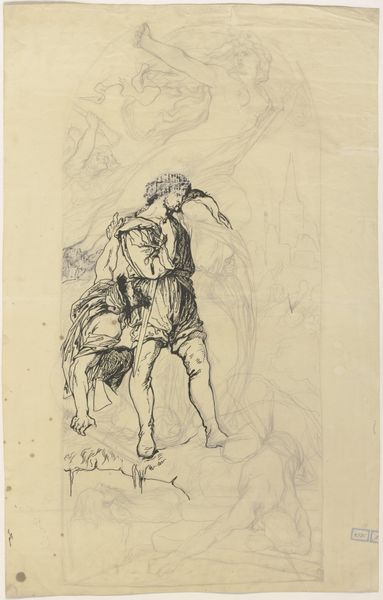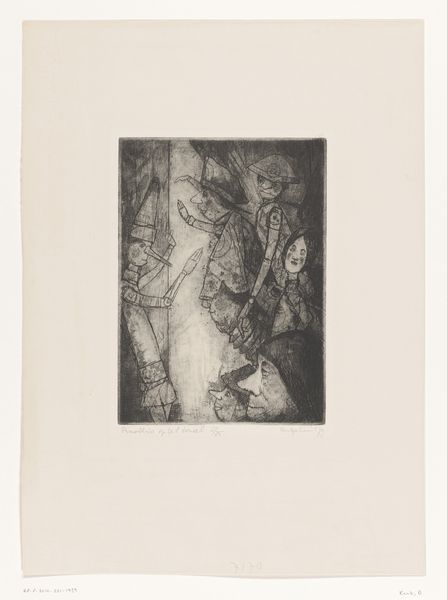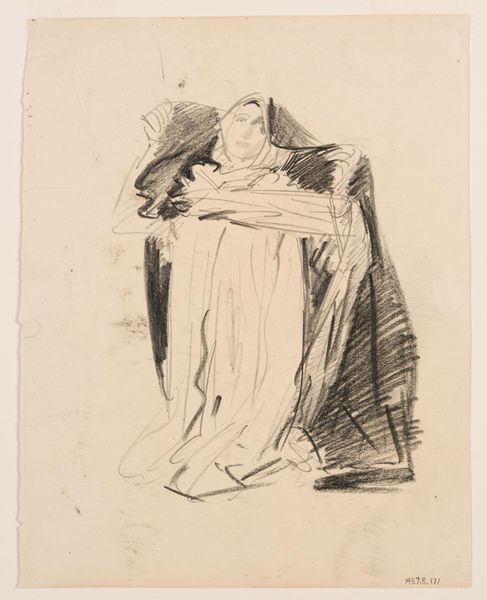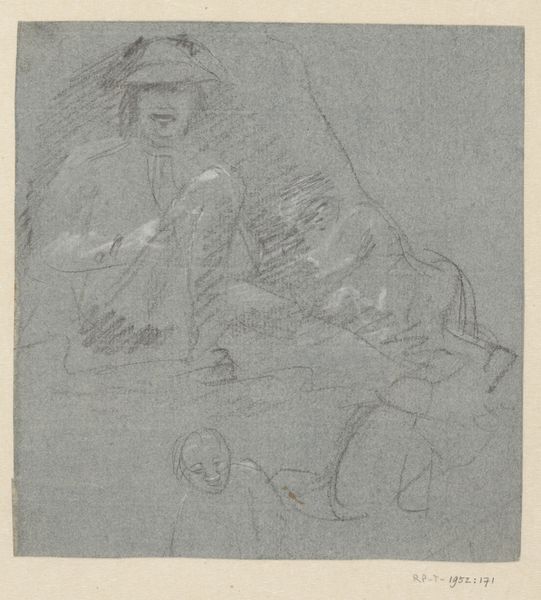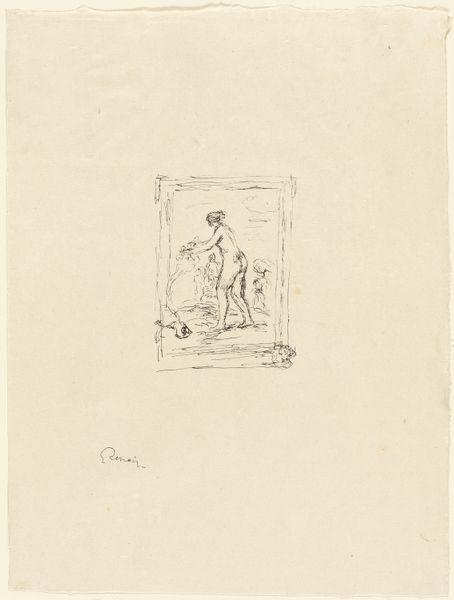
Dimensions: height 427 mm, width 430 mm
Copyright: Rijks Museum: Open Domain
Curator: Here we have Isaac Israels’ “Clown met ballonnen,” a pencil drawing from between 1895 and 1934, currently held at the Rijksmuseum. Editor: The immediate impression is melancholic, almost haunted. Despite the subject—a clown, usually associated with joy—the stark monochrome palette and tentative lines convey a deep sadness. Curator: Clowns often embody duality, the painted smile concealing complex emotions. The visible shadows emphasize the duality and the potential darker sides to clowns we might find discomforting. The quick, expressive lines add movement and even volatility to the piece. Editor: Absolutely, and Israels situates this figure against a blurred, indefinite background that adds to the clown’s apparent isolation. Considering Israels’ wider body of work which depicts everyday city life, particularly the marginalized and working classes, one could argue this clown represents the human condition stripped bare, performing for a society from which they remain alienated. Curator: That perspective allows for deeper interpretation. The clown archetype also invokes the “fool” in cultural memory, the figure who holds a mirror to society and speaks truths others cannot. Here the pencil evokes a rawness of form, like uncovering a figure of collective awareness. Editor: Also note the somewhat obscured balloons – typically a symbol of joy and celebration – become muted and even ominous in this drawing. Their heaviness suggests a weight the clown must bear. Considering performance as labor, what joy is truly found? Is this image a mirror held to the labor itself, forcing us to grapple with what performativity does? Curator: That's a potent observation. Thinking about cultural performance, particularly how clowning emerged within theatrical spaces but has been co-opted in the modern day, brings me back to duality, of an established character being forced to morph through societal expectation. Perhaps Israels offers here a look into that act, of something genuine transforming, and perhaps fading. Editor: This drawing forces an uncomfortable contemplation of our relationship with joy and performance. It's not just about entertainment, it is about what it means to hide ourselves for an audience and to consider those doing so.
Comments
No comments
Be the first to comment and join the conversation on the ultimate creative platform.
